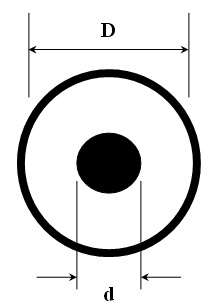 |
Any 50 Ohm coax will work for attaching external antennas on wireless network equipment for 2.4Ghz and 5,8Ghz equipment. However there are a number of factors that affect performance due to rf leakage and attenuation due to materials and shielding used by manufacturers. These factors become more important the higher the frequency and lower the power level used. Both apply to wireless network equipment and so it is important to use higher quality coaxial cables or keep lengths to a minimum. This translates into a 50 Ohm coax cable with a non-foam dielectric eg But remember a loss of 3db means a 50% reduction in power… |
|
Examples are: Semi-Rigid RG402U or RG405U suitable for hard wiring and fixed pigtails LMR195 suitable for making Pigtails max 3 Meters CFD200 or CNT200 suitable for making Pigtails max 5 Meters CNT400, CFD400 or LMR400 suitable for Antenna runs up to 10 Meters LDF4-50A (Heliax) suitable for Antenna runs up to 20 Meters |
|
|
The impedance of a coaxial cable that has a round center conductor Zo = 138 Log (D/d) Log is always to base 10, (ln is natural log). Zo is the surge impedance, generally 50 ohms, D = inside diameter of the outer conductor, d = outside diameter of the inter conductor. Any dielectric other than air requires that the constant 138 be modified |
|
